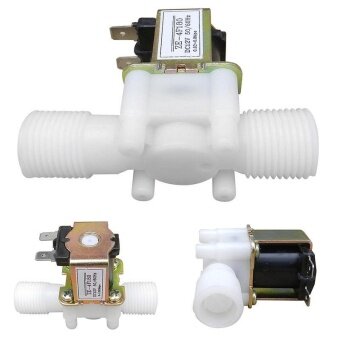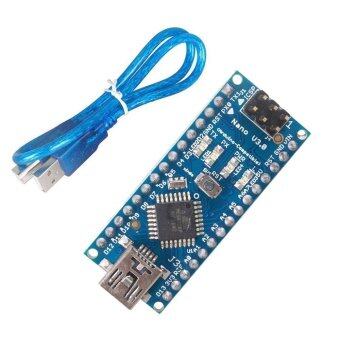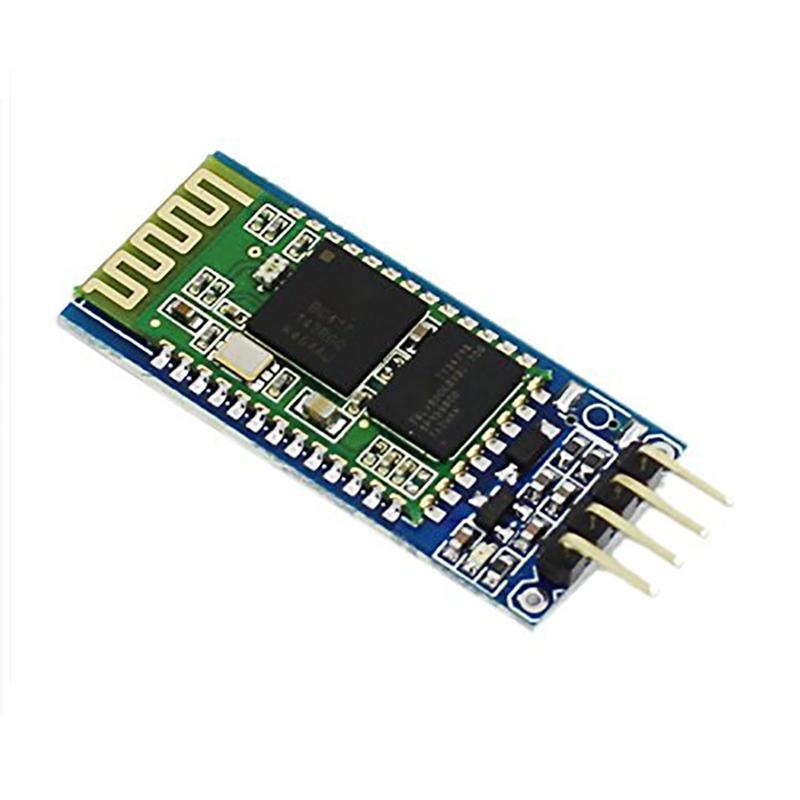เมื่อเราต้องการที่จะปลูกผัก H้ydroponic ด้วยเหตุผลอะไรก็สุดแล้วแต่ไม่ว่าจะเพื่อกินเองหรือเพื่อขาย หรือเพื่อเป็นการผ่อนคลายยามว่ามันก็จะต้องมาพิจารณาว่าเราจะมีเวลาที่จะปลูกแค่ไหนหรือ เราจะปลูกมันอย่างไร จากวัสดุอะไร ในยุคปัจจุบันผม ได้เห็นแล้วว่าเมื่อเราอยุ่ในเมืองมันมีข้อจำกัดจริงๆในการที่จะปลูกอะไรซักอย่างมันมีทั้งพื้นที่และเวลา ในการดูแลที่จำกัดเมื่อเราคิดว่าจะทำก้ต้องลองดูซักตั้งเพื่อเป็นการพิสูจน์ว่าเราไม่ใช่คนไก่กา แต่พอมาลองจะทำดูก็จะมีเหตุให้เป็นอันทำไม่เสร็จซื้อของมาไม่ครบ ต้องวิ่งรถไปร้านขายหลายรอบ บางทีอาจยกเลิกไปเลยเสียเงินเสียเวลา โดยเฉพาะในยุคนี้ยุคที่เวลามีค่ามากกว่าเงินทอง เรายอมจ่ายเงินค่าธรรมเนียมต่างๆแลกกับการเสียเวลารอคิวถูกไหมครับนั่นแหละที่เขาเรียกว่าเวลาเป็นเป็นทอง ผมเลยอยากแนะนำเพื่อนๆ ถ้าคิดจะทำลองพิจารณาซื้อชุดสำเร็จรูปตัวนี้ไปใช้ได้เลยตามลิ้งข้างล่าง ครบชุดพร้อมปลูก
ชุดนี้เขาขายที่ LAZADA ลองเข้าไปดูนะครับ ผมว่ากับราคา 1750 บาทคุ้มค่ามากๆ ดูในชุดที่ให้มาผมเอาข้อมูลมาให้เพื่อนๆดู มันให้แม้กระทั้งเม็ดผัก มีปั้มน้ำด้วย ก็คิดว่าเหมาะสำหรับคนที่ชอบอะไรที่คุ้มค่าๆหรือแบบ เห็นชุดนี้แล้วไม่ต้องคิดไรมากเลย ผมกำลังจะจัดมาเหมือนกันเพราะว่าจะเอามาทำชุดปลูกอัตโนมัติ
 ชุดปลูกผักHydroponic รุ่น Hydro12
ชุดปลูกผักHydroponic รุ่น Hydro12
 โครงโต๊ะ PVC สีขาว ขนาด 50 x 50 x 40 cm
โครงโต๊ะ PVC สีขาว ขนาด 50 x 50 x 40 cm
 2.รางปลูกผักไฮโดรโปนิกส์ ความยาว 60 cm จำนวน 3 ราง
2.รางปลูกผักไฮโดรโปนิกส์ ความยาว 60 cm จำนวน 3 ราง
 3.ชุดท่อส่งสารละลายธาตุอาหาร พร้อมวาล์วเปิดปิด 3 ตัว
3.ชุดท่อส่งสารละลายธาตุอาหาร พร้อมวาล์วเปิดปิด 3 ตัว
 4.ชุดท่อรวมสารละลายอาหาร
4.ชุดท่อรวมสารละลายอาหาร
 5.สารละลายธาตุอาหาร ปุ๋ย A และ B อย่างละ 500 ซีซี
5.สารละลายธาตุอาหาร ปุ๋ย A และ B อย่างละ 500 ซีซี
 6.ไซริ้งค์ 1 อัน
6.ไซริ้งค์ 1 อัน
 7.ถ้วยตวงน้ำ 1 ใบ
7.ถ้วยตวงน้ำ 1 ใบ
 8.ถาดเพาะเมล็ด 1 ใบ
8.ถาดเพาะเมล็ด 1 ใบ
 9.ฟองน้ำ 1 แผ่น
9.ฟองน้ำ 1 แผ่น
 10.ถ้วยปลูกเขียว 36 ใบ
10.ถ้วยปลูกเขียว 36 ใบ
 11.ถ้วยปลูกใช้ซ้ำ 24 ใบ
11.ถ้วยปลูกใช้ซ้ำ 24 ใบ
 12.เคเบิ้ลไทด์ 1 เส้น
12.เคเบิ้ลไทด์ 1 เส้น
 13.เมล็ดผักสลัด 100 เมล็ด
13.เมล็ดผักสลัด 100 เมล็ด
 14.เมล็ดกวางตุ้ง 100 เมล็ด
14.เมล็ดกวางตุ้ง 100 เมล็ด
 15.ปั๊มน้ำ 1 ตัว
15.ปั๊มน้ำ 1 ตัว
 16.ถังน้ำ 1 ใบ
16.ถังน้ำ 1 ใบ
 17.สายยาง 2 เส้น
17.สายยาง 2 เส้น
 18.เข็มขัดรัดท่อ 1 ตัว
18.เข็มขัดรัดท่อ 1 ตัว
 19.คู่มือการปลูกผักไฮโดรโปนิกส์
19.คู่มือการปลูกผักไฮโดรโปนิกส์
เมื่อได้ชุดปลูกแล้วก็เหลือแต่ชุดควบคุมอัตโนมัติ ซึ่งเราจะต้องมาทำกันขึ้นมา โดยแนวคิดคือ เราจะต้องให้ปุ๋ยกับผักอย่างสม่ำเสมอ มีการควบคุมค่า ph จ่ายน้ำเลี้ยงอย่างต่อเนื่อง ทีนี้แต่ละเรื่องที่เราจะต้องจัดการเรามาลำดับกันเป็นขั้นตอนกันดังนี้นะครับ
อุปกรณ์
ESP8266 Node MCU
Solenoid valve
Relay
ph sensor
Conduct sensor
Wiring Diagram
ชุดนี้เขาขายที่ LAZADA ลองเข้าไปดูนะครับ ผมว่ากับราคา 1750 บาทคุ้มค่ามากๆ ดูในชุดที่ให้มาผมเอาข้อมูลมาให้เพื่อนๆดู มันให้แม้กระทั้งเม็ดผัก มีปั้มน้ำด้วย ก็คิดว่าเหมาะสำหรับคนที่ชอบอะไรที่คุ้มค่าๆหรือแบบ เห็นชุดนี้แล้วไม่ต้องคิดไรมากเลย ผมกำลังจะจัดมาเหมือนกันเพราะว่าจะเอามาทำชุดปลูกอัตโนมัติ
รายละเอียดสินค้า
ชุดปลูกผักไฮโดรโปนิกส์ รุ่น set12
รายละเอียดสินค้า
 ชุดปลูกผักHydroponic รุ่น Hydro12
ชุดปลูกผักHydroponic รุ่น Hydro12 โครงโต๊ะ PVC สีขาว ขนาด 50 x 50 x 40 cm
โครงโต๊ะ PVC สีขาว ขนาด 50 x 50 x 40 cm 2.รางปลูกผักไฮโดรโปนิกส์ ความยาว 60 cm จำนวน 3 ราง
2.รางปลูกผักไฮโดรโปนิกส์ ความยาว 60 cm จำนวน 3 ราง 3.ชุดท่อส่งสารละลายธาตุอาหาร พร้อมวาล์วเปิดปิด 3 ตัว
3.ชุดท่อส่งสารละลายธาตุอาหาร พร้อมวาล์วเปิดปิด 3 ตัว 4.ชุดท่อรวมสารละลายอาหาร
4.ชุดท่อรวมสารละลายอาหาร 5.สารละลายธาตุอาหาร ปุ๋ย A และ B อย่างละ 500 ซีซี
5.สารละลายธาตุอาหาร ปุ๋ย A และ B อย่างละ 500 ซีซี 6.ไซริ้งค์ 1 อัน
6.ไซริ้งค์ 1 อัน 7.ถ้วยตวงน้ำ 1 ใบ
7.ถ้วยตวงน้ำ 1 ใบ 8.ถาดเพาะเมล็ด 1 ใบ
8.ถาดเพาะเมล็ด 1 ใบ 9.ฟองน้ำ 1 แผ่น
9.ฟองน้ำ 1 แผ่น 10.ถ้วยปลูกเขียว 36 ใบ
10.ถ้วยปลูกเขียว 36 ใบ 11.ถ้วยปลูกใช้ซ้ำ 24 ใบ
11.ถ้วยปลูกใช้ซ้ำ 24 ใบ 12.เคเบิ้ลไทด์ 1 เส้น
12.เคเบิ้ลไทด์ 1 เส้น 13.เมล็ดผักสลัด 100 เมล็ด
13.เมล็ดผักสลัด 100 เมล็ด 14.เมล็ดกวางตุ้ง 100 เมล็ด
14.เมล็ดกวางตุ้ง 100 เมล็ด 15.ปั๊มน้ำ 1 ตัว
15.ปั๊มน้ำ 1 ตัว 16.ถังน้ำ 1 ใบ
16.ถังน้ำ 1 ใบ 17.สายยาง 2 เส้น
17.สายยาง 2 เส้น 18.เข็มขัดรัดท่อ 1 ตัว
18.เข็มขัดรัดท่อ 1 ตัว 19.คู่มือการปลูกผักไฮโดรโปนิกส์
19.คู่มือการปลูกผักไฮโดรโปนิกส์เมื่อได้ชุดปลูกแล้วก็เหลือแต่ชุดควบคุมอัตโนมัติ ซึ่งเราจะต้องมาทำกันขึ้นมา โดยแนวคิดคือ เราจะต้องให้ปุ๋ยกับผักอย่างสม่ำเสมอ มีการควบคุมค่า ph จ่ายน้ำเลี้ยงอย่างต่อเนื่อง ทีนี้แต่ละเรื่องที่เราจะต้องจัดการเรามาลำดับกันเป็นขั้นตอนกันดังนี้นะครับ
อุปกรณ์
ESP8266 Node MCU
Solenoid valve
Relay
ph sensor
Conduct sensor
Features:
*Electric solenoid valve, 100% Brand New and durable.
*Material:Metal + plastic
*Color: As Pictures Show
*Screw diameter: approx. 20mm/0.79’’;
Size: approx. 84 * 57mm/3.31’’x2.24’’ (L x H);
Coil size: approx. 34 * 23mm/1.34’’x0.91’’ (W x H)
*Usage: water and low viscosity fluids
Specifications:
*Voltage: DC 12V
*Power: 8W
*Current: 0.6A
*Inlet and outlet: hose barbs for 1/2" (outer diameter) hose
*Pressure: 0.02- 0.8Mpa
*Max fluid temperature: 100°C
*Operation mode: normally closed
Package Contents
1*Electric solenoid valve
VDO How to create BLYNK
Wiring Diagram
Arduino Code
#include <Adafruit_Sensor.h>
/*************************************************************
Download latest Blynk library here:
https://github.com/blynkkk/blynk-library/releases/latest
Blynk is a platform with iOS and Android apps to control
Arduino, Raspberry Pi and the likes over the Internet.
You can easily build graphic interfaces for all your
projects by simply dragging and dropping widgets.
Downloads, docs, tutorials: http://www.blynk.cc
Sketch generator: http://examples.blynk.cc
Blynk community: http://community.blynk.cc
Follow us: http://www.fb.com/blynkapp
http://twitter.com/blynk_app
Blynk library is licensed under MIT license
This example code is in public domain.
*************************************************************
This example shows how value can be pushed from Arduino to
the Blynk App.
WARNING :
For this example you'll need Adafruit DHT sensor libraries:
https://github.com/adafruit/Adafruit_Sensor
https://github.com/adafruit/DHT-sensor-library
App project setup:
Value Display widget attached to V5
Value Display widget attached to V6
*************************************************************/
/* Comment this out to disable prints and save space */
#define BLYNK_PRINT Serial
#include <ESP8266WiFi.h>
#include <SPI.h>
//#include <Ethernet.h>
#include <ESP8266WiFi.h>
//#include <BlynkSimpleEthernet.h>
#include <BlynkSimpleEsp8266.h>
#include <DHT.h>
#include <Wire.h>
#include <LiquidCrystal_I2C.h>
LiquidCrystal_I2C lcd(0x27, 16, 2);
// You should get Auth Token in the Blynk App.
// Go to the Project Settings (nut icon).
char auth[] = "6dfbf92a8cdd4f18b30347ee9ed1789e";
char ssid[] = "santi"; //user WIFI
char pass[] = "santi12345678"; // password WIFI
#define DHTPIN D3 // What digital pin we're connected to
// Uncomment whatever type you're using!
#define DHTTYPE DHT11 // DHT 11
//#define DHTTYPE DHT22 // DHT 22, AM2302, AM2321
//#define DHTTYPE DHT21 // DHT 21, AM2301
DHT dht(DHTPIN, DHTTYPE);
BlynkTimer timer;
// This function sends Arduino's up time every second to Virtual Pin (5).
// In the app, Widget's reading frequency should be set to PUSH. This means
// that you define how often to send data to Blynk App.
void sendSensor()
{
float s = analogRead(A0);
float h = dht.readHumidity();
float t = dht.readTemperature(); // or dht.readTemperature(true) for Fahrenheit
lcd.begin();
lcd.backlight();
lcd.setCursor(0,0);
lcd.print("Humi:");
lcd.setCursor(5,0);
lcd.print(h);
lcd.setCursor(0,1);
lcd.print("Temp:");
lcd.setCursor(5,1);
lcd.print(t);
lcd.setCursor(8,0);
lcd.print("Soi:");
lcd.print(s);
if (isnan(h) || isnan(t)) {
Serial.println("Failed to read from DHT sensor!");
return;
}
// You can send any value at any time.
// Please don't send more that 10 values per second.
Blynk.virtualWrite(V5, h);
Blynk.virtualWrite(V6, t);
}
void setup()
{
// Debug console
Serial.begin(9600);
Blynk.begin(auth, ssid, pass);
dht.begin();
// Setup a function to be called every second
timer.setInterval(10000L, sendSensor);
lcd.begin();
lcd.backlight();
}
void loop()
{
Blynk.run();
timer.run();
}















